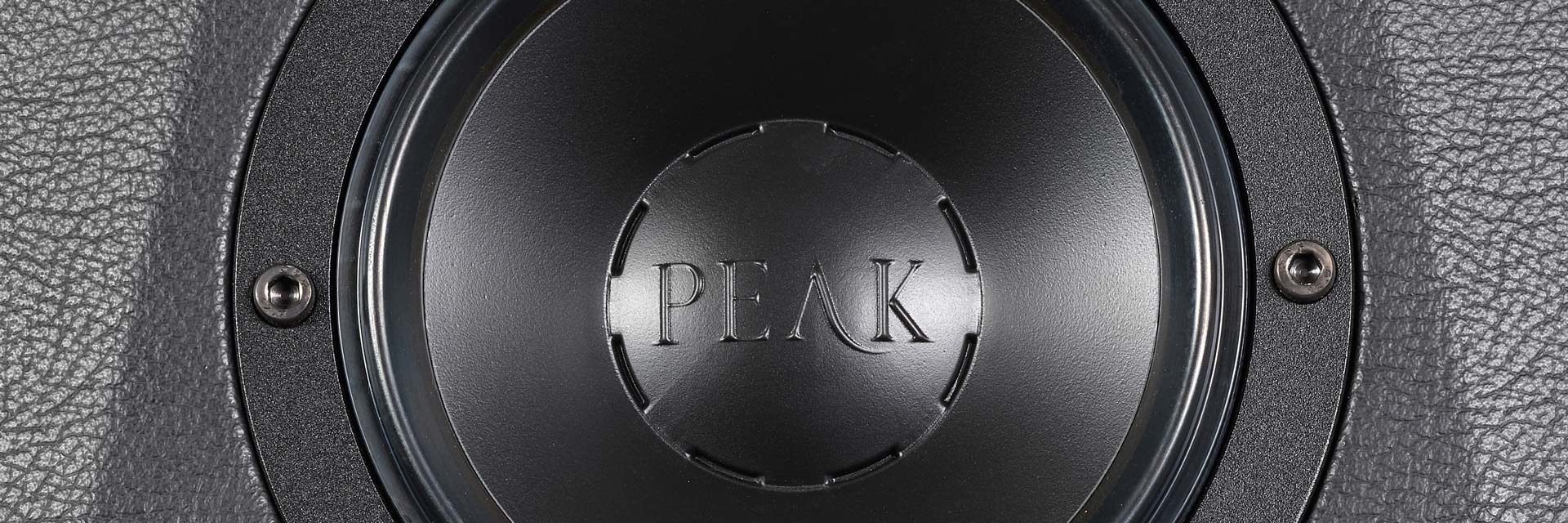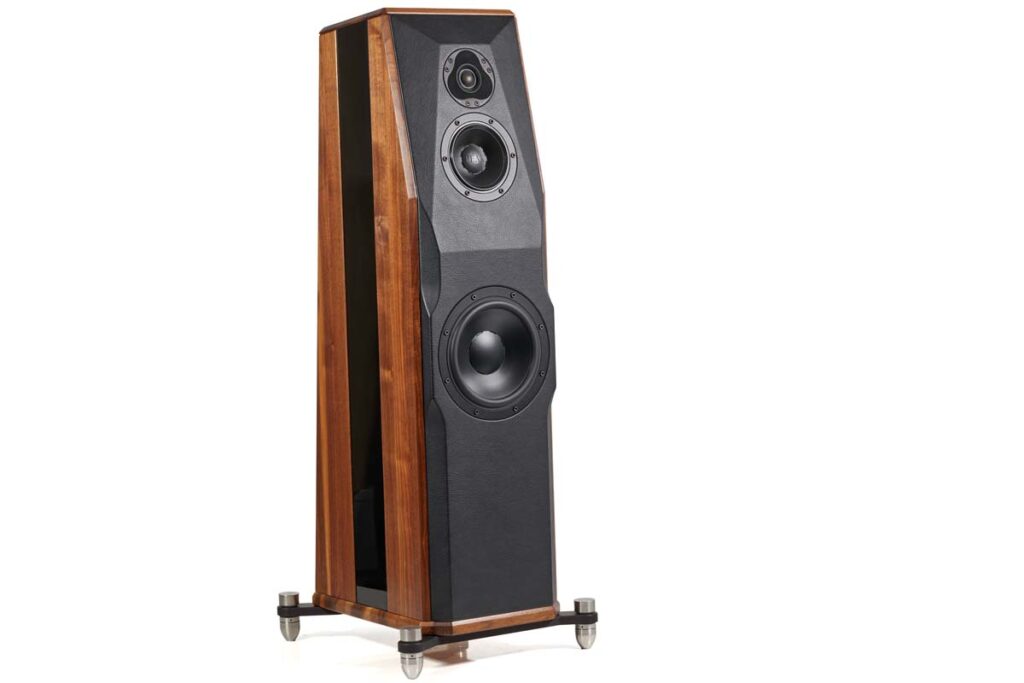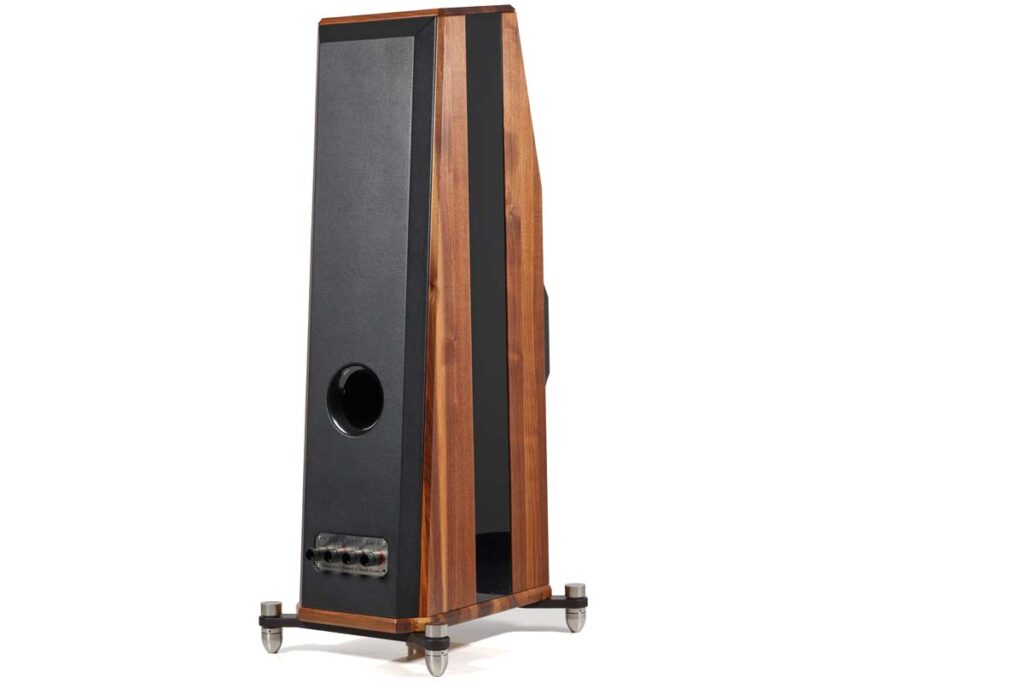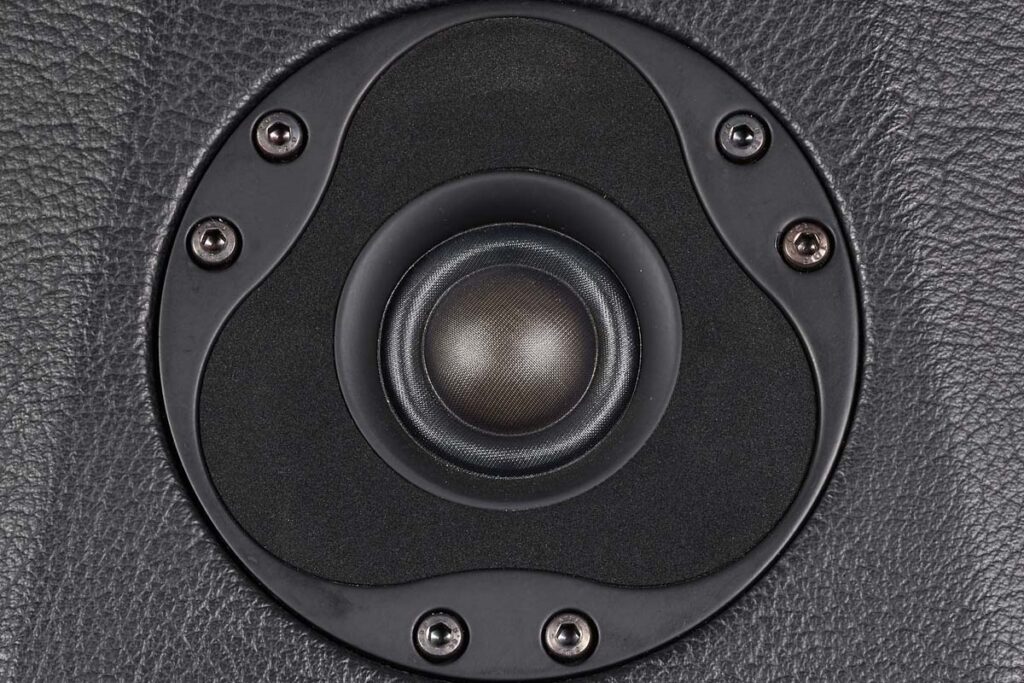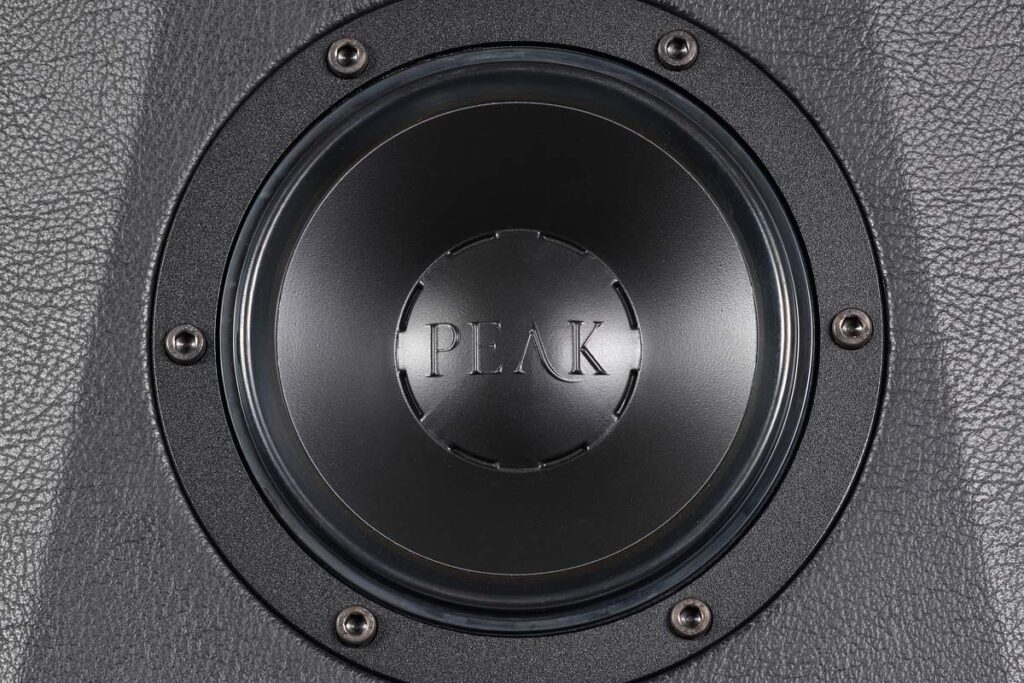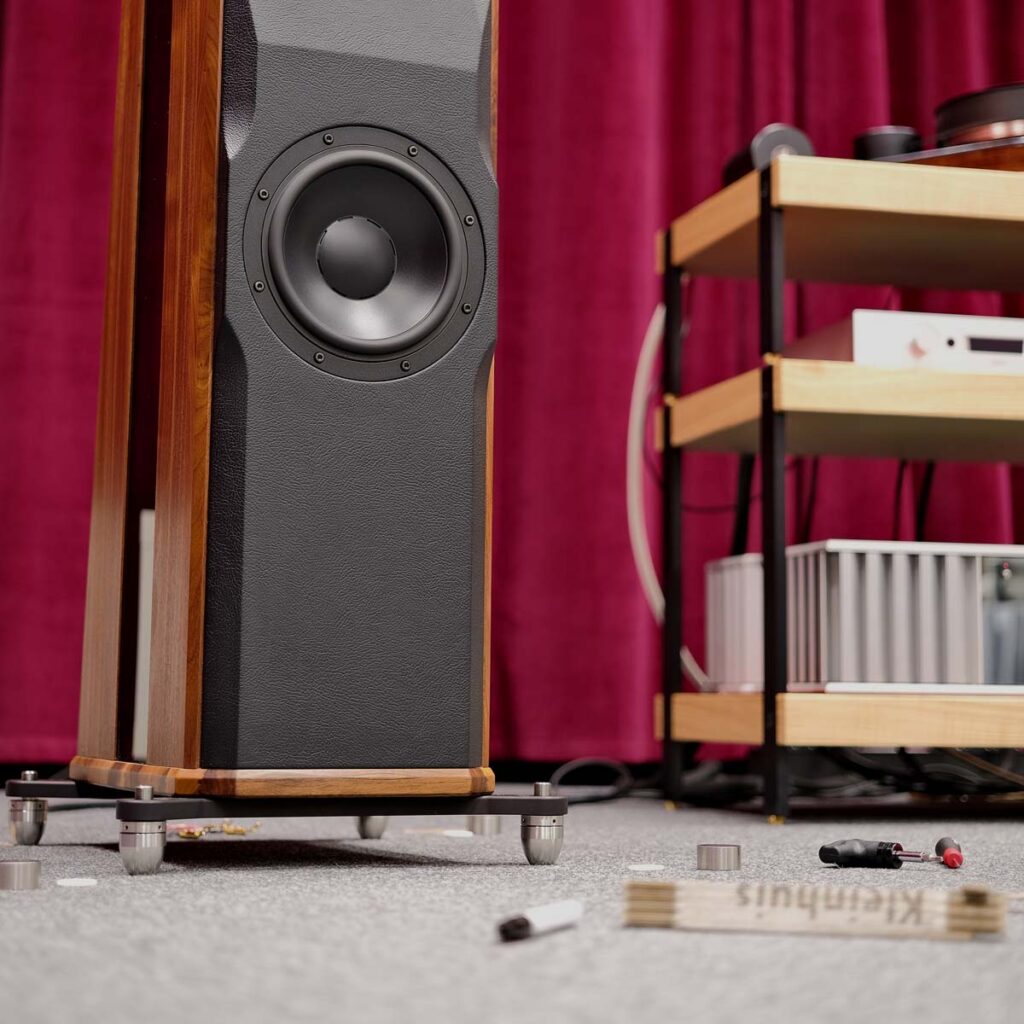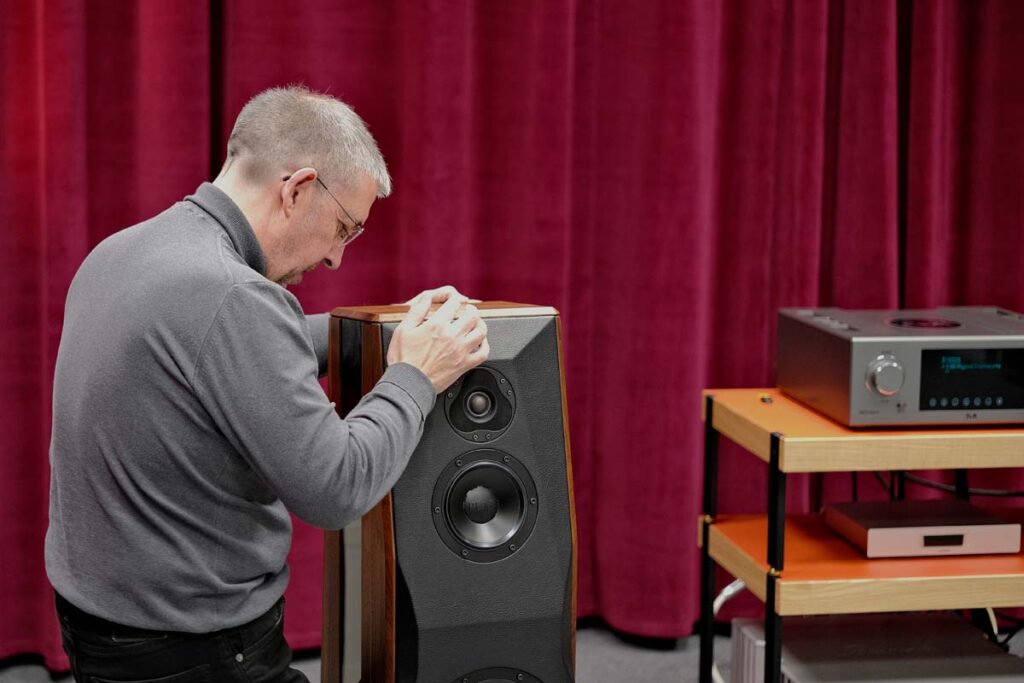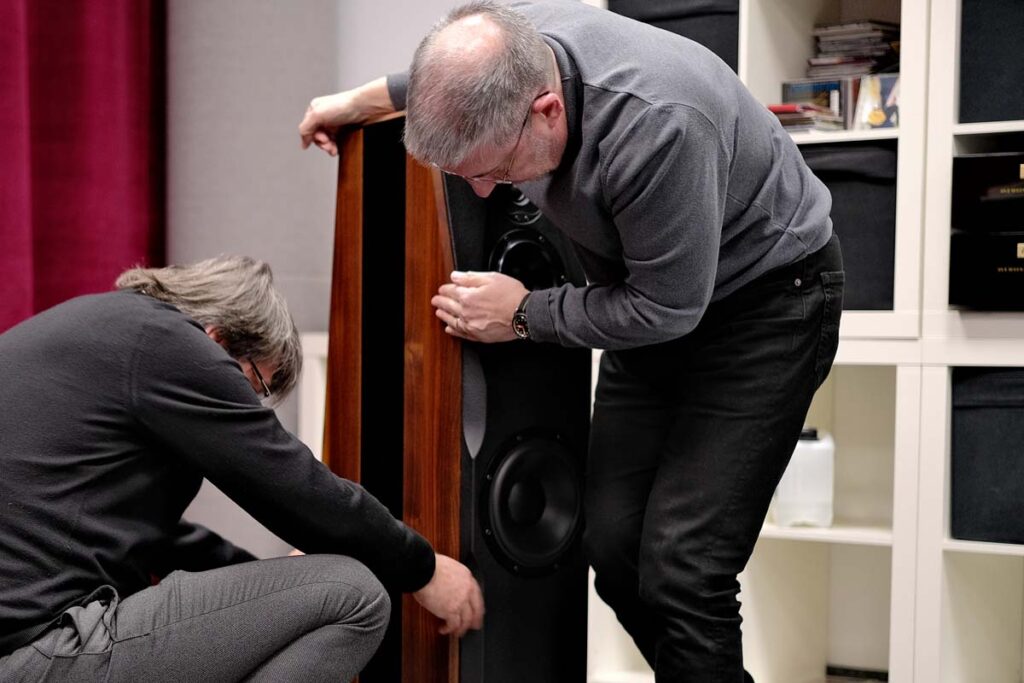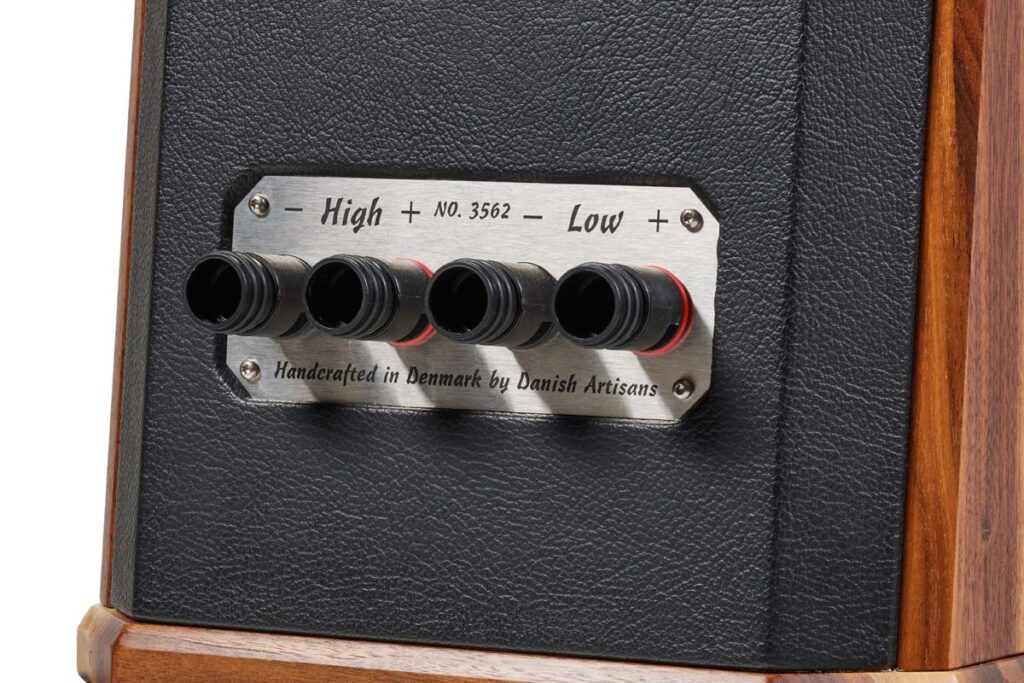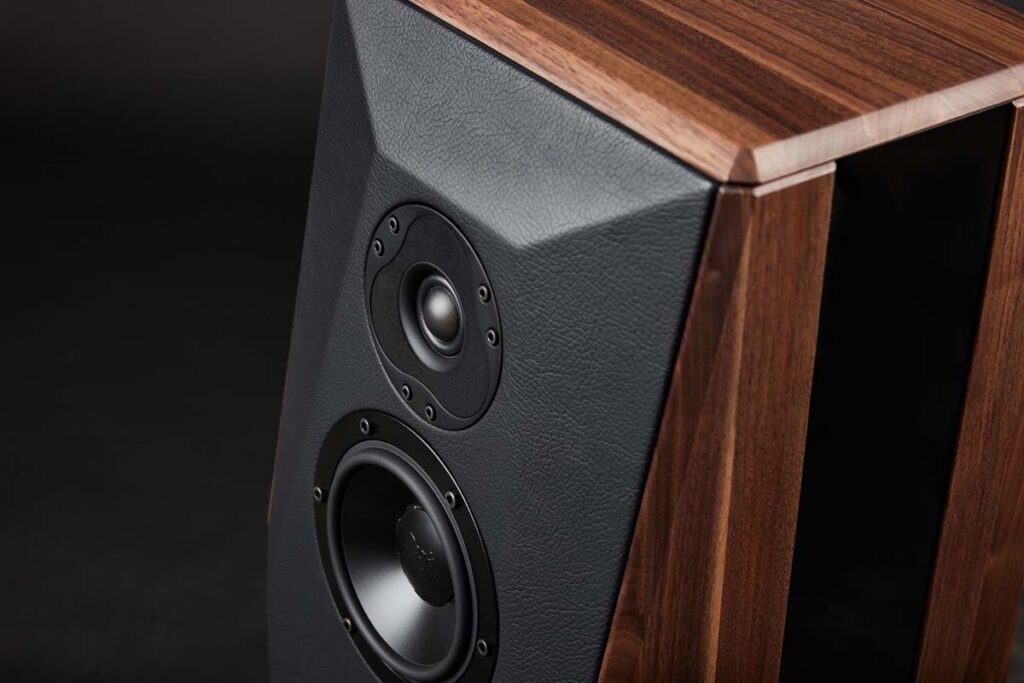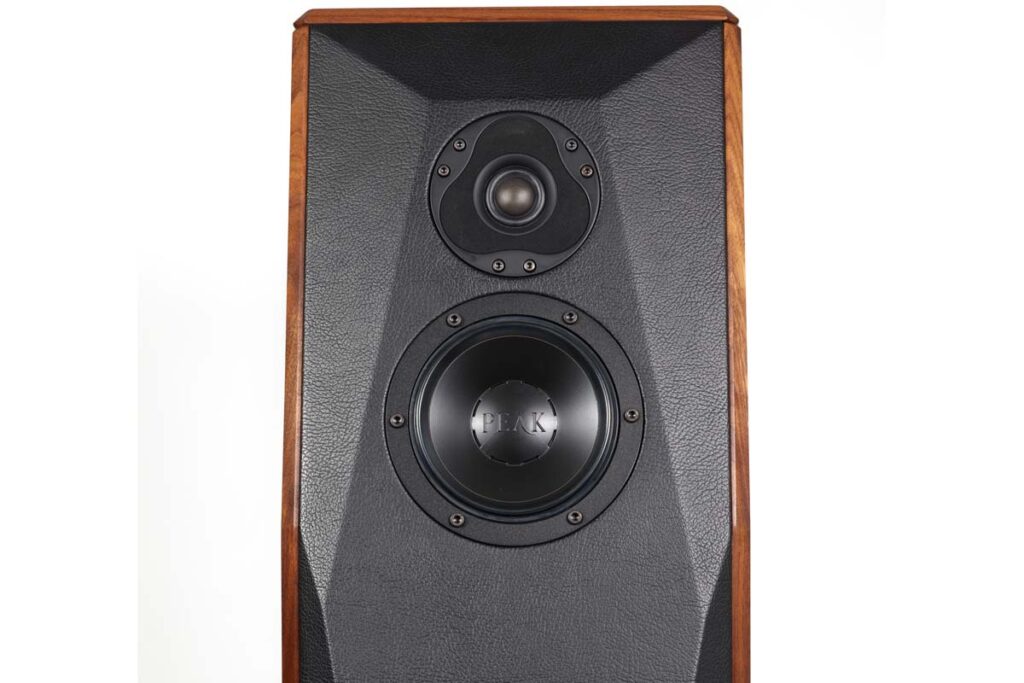Dynaudio founder Wilfried Ehrenholz left his own company because it had become too big for his taste –too much driven by the usual mass market constraints. When the opportunity to acquire the ailing manufacturer Peak Design– now Peak Consult – opened up, he sensed the perfect opportunity to build loudspeakers his way again. The Peak Sinfonia thus gives us a taste of what a purely passion-driven Dynaudio might sound like…
You know the old adage: routine kills art. I don’t think I’m telling you anything new when I point out that you can get quite a lot of performance out of your loudspeakers by meticulously fine-adjusting their positioning and toe-in – even if you already had them dialed in “decently well”. Experienced high-end enthusiasts are also aware that the type of coupling to the floor can make a significant difference as well. Over time, you also learn that even small details, like the way you hook up the speaker cables to the bi-wiring terminal, can have a noticeable effect on the sound. But let’s be real: just unboxing a new pair of loudspeakers and connecting them up to your component park is already quite the hassle. So when after an initial unsuccessful attempt or two you find a position where bass and soundstage seem about right and the stereo center is reasonably stable, you want to reward yourself with some music before tackling all the tedious fine adjustment. If the initial setup yields convincing enough results, those final setup steps may well end up postponed “for the time being.” This is all the more true when you’re dealing with 80-kilogram chonkers, where every centimeter and every degree of adjustment involves real physical work.
For many a component, a 70 percent setup job like this may well prove adequate – even in the high-end sector, I can think of a whole range of spaekers that will give you good results straight away, as long as you don’t place them right on a room node and toe them out asymmetrically. Further fine adjustments then typically result in noticeable yet all in all rather subtle improvements. But then there’s the other kind of loudspeaker that makes it abundantly clear from the outset that it demands time and effort to get it to sound right. While the former plateau fairly quickly, the latter tend to generously reward patience and fine-tuning with ever new acoustic heights, often proving superior once you’ve put the work in. Can you guess what speaker I’m thinking about? That’s right: the Peak Consult Sinfonia. Now I do realize that by giving it all away in the title already, I’ve completely taken the wind out of this dramatic reveal’s sails, but I felt the need to really drive home the contrast between the two speaker types because my experience with the Sinfonia was an eye- and ear opener like I’ve seldom heard before.
Off to a Rocky Start
The first legs of my sonic journey with the Sinfonia were not the easiest: after a week-long acclimatization phase, I laid a supply line from the Burmester 216 stereo power amplifier to its terminals. Before that, I had moved it to a spot that was still marked from the last speaker review – mistake number one: For good reason, we (normally) strictly adhere to the rule of immediately removing any markings from previous reviews. Too great is the temptation of simply copy and pasting all the fine-tuning work already done to the new candidate – what worked perfectly fine there can’t be too bad here, right? Well, yes, usually not too bad, but typically not remotely ideal either. I did it anyway, fully aware that it was only supposed to be a starting point from which I would work toward the ideal sound. So I streamed the next best piece to gauge how much work I would still have ahead of me – and after a couple of notes, I turned a little pale: Was everything properly connected? Could it even be that there’s a defect somewhere? The bass is there, but it’s not pretty, and after listening for a bit, I put my ear to the tweeters to check if it’s playing at all – it is, technically, everything is working fine. How can that be? This is not the kind of sound I’d expect from a speaker developed by Wilfried Ehrenholz – with the kind support of Karl-Heinz Fink, no less. Sure, every speaker reacts differently to every listening room, but what I’m hearing here can only be down to user error.
So I tell myself to keep calm, remove the marking tape, and start over from scratch, this time armed with a tape measure and aiming for a stereo triangle with a base width of about 80 percent of the listening distance – and soon the color comes back to my face: clearly, setting up the Sinfonia simply requires a lot of love and attention. The ends of the frequency spectrum aren’t quite there yet, but what I’m hearing now is definitely a promising start! The midrange reproduction in particular clearly indicates that there is a lot of potential here: room-filling, warm, and with a wonderfully organic, flowing naturalness. So I roll up my sleeves and get to work, and after a while I finally get a result that puts a smile on my face: Now I don’t mind listening to these at all! It quickly becomes apparent that the Sinfonia is far from being a clinical musical scalpel, but rather on the full and warm side. It clearly puts natural timbre reproduction before surgical attention to detail. Make no mistake though, from the very first bars of Holst’s “Mars, the Bringer of War” (Planets, Berlin Philharmonic Orchestra under Herbert von Karajan), it becomes clear to me that fine detail retrieval is not just fine, but remarkable even by high-end standards: Without ever becoming obtrusive, the Sinfonia extracts every tiny scraping and grinding noise in the orchestra from the recording with impressive precision and embeds it in the sound field with enormous sensitivity. What I’m hearing here is a far cry from the “cheap trick” of over-etched brilliance you sadly encounter all too often, especially in the highest price ranges – this is genuine resolution without artificial flavor enhancers that never, ever pushes itself in front of the big musical picture.
Sound furniture in the best sense of the word
I attribute this characteristic not only to the excellent ScanSpeak tweeter, but crucially to the loudspeaker as a whole, because the cabinet construction plays an equally important role in the overall result: The tweeter’s diaphragm area and excursion are naturally tiny, so if the cabinet shows even the slightest hint of vibration a good part of the tweeter output – no matter how good it is – will simply be drowned out by cabinet hum. Not so with the Sinfonia: 30-millimeter-thick enclosure walls made of three layers of fiberboard of varying densities plus 14 millimeters of real wood ensure that the membranes are definitely the only thing that makes even the slightest sound. In fact, founder Per Kristoffersen, from whom Wilfried Ehrenholz took over the company a few years ago, trained as a carpenter and only came to loudspeaker construction later in life, so to speak – the magnificent finish of the walnut veneer is impressive testimony to this fact.
So I leave the listening room in a good mood, sharpen my pen and – oh yes, I had arranged a Zoom meeting with Wilfried Ehrenholz and Dalibor Beric from the German sales department to learn a few more things about the Sinfonia. The two were not in the least surprised by my setup adventure and remained tellingly calm even when I “confessed” to them that there was one remaining point of criticism: on some pieces – especially when percussion or drums were involved – I still wasn’t fully convinced of the upper bass, which I felt sounded a little constricted. “That’s actually convenient”, Ehrenholz explained, because he wanted to send Dalibor Beric and Peak Sales Manager Mike Picanza over to us anyway to show just how much more they could actually tease out of the Sinfonia.
Good isn’t good enough
Fast forward a few days, and the two of them are standing behind the left speaker, exchanging knowing glances: “There’s our first suggestion for improvement.” I had connected the speaker cables to the high-frequency inputs of the bi-wiring terminals – normally I tend to wire diagonally (positive into the low frequency, negative out of the high frequency), which I consider advantageous, at least in theory, but I’ve forgotten why exactly, and I’ve never heard a noticeable difference anyway, so I don’t really pay much attention to it anymore. Peak Consult does. The bananas move into my preferred arrangement, and on “Tenderly,” which Dianne Reeves sings in duet with Joe Williams on her album The Grand Encounter, the soundstage immediately opens up audibly. This may sound like one of those imaginary improvements, but on a track with clearly positioned performers, it’s actually quite easy to verify: I can place the voices of Reeves and Williams quite precisely in relation to the physical position of the components in the rack, and with the diagonal wiring, they clearly move about three hand widths farther apart. The way such an innocuous tweak that most of us wouldn’t take seriously makes such a tangible difference illustrates a key characteristic of the Sinfonia that Picanza and Beric never tire of pointing out: it clearly reveals the qualities not only of the recording, but also of the playback devices, right down to the cables and other supposed trivialities. In my listening sessions with a range of amplifiers from Aavik to Burmester to Line Magnetic, along with various sources and, yes, even cables, this impression had already solidified. Incidentally, the end user doesn’t need to worry about “bi-wiring technique”, as the Sinfonia is normally delivered with a single-wiring terminal – unless you specifically request a bi-wiring one.
There’s still our little the upper bass headache, though, and the two won’t leave until they’ve ironed that out as well. “Oh Soji” by 88Kasyo Junrei (Genma Teisei) is our test subject – a funky indie rock track with lots of abrupt starts and stops and a snare that had really rubbed salt into the wound during my previous listening sessions. I’m quite amazed when Mike Picanza starts unscrewing the caps on the speaker feet – depending on the floor conditions, it can sound better with or without them, he explains to me. He adjusts the feet so that there is a credit card-width gap between them and the outriggers, then balances the speakers in the usual way. We actually have a rigid coupling here, but the mere fact that this minimal distance means there is no direct contact between the feet and the speaker itself should have a noticeable effect on the sound – and it does! I do know speakers where such subtleties can have such a clearly discernible effect on the sound (looking at you, Audio Note). That alone almost completely eliminated the slightly compressed way they reproduce hard bass impulses, and further experimentation with cables took care of the last remnants of it. What amazes me most is that the Sinfonia has generally drastically improved – and we haven’t even moved it an inch. We did experiment with the setup, but after a few attempts, it ended up back exactly where it was before the session.
A final run with Ichijin-no-Kaze by Wadaiko Matsuriza (Wadaiko Matsuriza: Japanese Drums): After the delicate shamisen plucking in the Beginning, the first mighty drumbeat from the back left can give you a bit of a jump scare. At least it’s supposed to, but for that to happen, everything has to be just right – especially the dynamics of the strike. If it doesn’t, you lose not only the explosiveness of it: if anything compresses even slightly, the whole drum just doesn’t sound right. After the professional treatment, the Sinfonia masters this challenge with aplomb. The body, the skin, the mallet – everything bursts into the room out of thin air with striking immediacy and believability. Incidentally, the stage opens up even further, the musical flow improves once again, the music now really breathes, everything is separated in an exemplary manner – the shamisen from the drums and the drums from each other – and yet always in a clear relationship to each other. I really just wanted to listen in for a brief sound check, but somehow it ends up taking me the full track duration of seven minutes before I find the stop button.
Only compromises are easy
This brings me to a question from the field of hi-fi philosophy: Is it a sign of quality when a speaker is uncomplicated? From the perspective of a “normal” quality-conscious consumer, certainly yes. But people buying high-end gear are often not normal in this sense, but rather demanding enthusiasts to whom the last drop of sound quality matters, and for whom the finest nuances in sonic character make the difference between a pleasant and a goosebump inducing experience. And this kind of customer wants to be dead certain that they are really exploiting the full potential of their setup – not 80% and not 95%, only the full 100% is good enough. A loudspeaker that clearly communicates that it still has more to offer creates clarity in an unexpected way and at the same time appears to be a logically compelling fact: it goes without saying that an uncompromisingly designed component will not tolerate compromises in its handling. To a non-enthusiast, this isn’t easy to convey, but anyone who has a good turntable at home will probably understand it immediately. Achieving this goal of perfect results is, of course, anything but trivial – for good reason, professional help with setup as experienced here is de rigueur in this class, so fortunately the user isn’t left to their own devices in the quest for the perfect setup. The Peak Sinfonia demands more from its owner than other speakers – it requires you to engage with it. However, what it gives you in return is well worth all the time and effort – after all, the highest peaks are the hardest to climb.
Accompanying Equipment
CD players: Ayon CD-3sx, Audio Note CD 3.1x | Network players/streamers: Lumin P1, T+A PSD 3100 HV | Preamplifier: Accuphase C-2300 | Integrated amplifiers: Line Magnetic LM-88IA, Aavik I-580 | Power amplifier: Burmester 216 | Loudspeakers: Wilson Audio Sasha DAW, Marten Parker Quintet, Avantgarde Acoustic Colibri | Racks: Solidsteel, Finite Elemente, Beaudioful | Cables: AudioQuest, HMS, in-akustik, Vovox
Loudspeaker Peak Consult Sinfonia
Concept: 3-way bass reflex floorstanding speaker | Drivers: 1 x 25 mm dome tweeter, 1 x 15 cm MSP midrange driver, 1 x 20 cm MSP woofer | Crossover points: 450 Hz, 3100 Hz | Sensitivity (1 W/1 m): 89 dB | Impedance: 5 Ω +/−1 Ω | Finish: Walnut, wenge, pure white, midnight black | Special features: separate sand-filled crossover compartment in the base of the cabinet, PLIC (Peak Linear Impedance Control) | Dimensions (W/H/D): 30/114/46 cm | Weight: 78 kg | Warranty period: 5 years | Price per pair: around €45,000
Drei H
Mika Dauphin
Kedenburgstraße 44, House D/1st floor
22041 Hamburg
Phone +49 177 6170123
mika.dauphin@3-h.de

